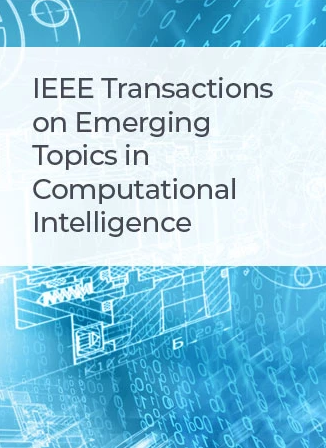Selective Transfer Based Evolutionary Multitasking Optimization for Change Detection
IF 5.3
3区 计算机科学
Q1 COMPUTER SCIENCE, ARTIFICIAL INTELLIGENCE
IEEE Transactions on Emerging Topics in Computational Intelligence
Pub Date : 2024-03-12
DOI:10.1109/TETCI.2024.3360331
引用次数: 0
Abstract
Change detection in multitemporal remote sensing images aims to generate a difference image (DI) and then analyze it to identify the unchanged/changed areas. The current change detection techniques always investigate a single change detection task of two images from the image series one by one and may ignore the relevant information across the different tasks. Furthermore, theoretical results have demonstrated that the distribution of DI can be interpreted by a Rayleigh-Rice mixture model (RRMM). The parameters of RRMM are usually estimated by the expectation-maximization (EM) algorithm, which is easy to be trapped into local minima. In order to address these issues, a selective transfer based evolutionary multitasking change detection method is proposed to deal with multiple change detection tasks concurrently. For each change detection task, the log-likelihood function and centroid distance function are considered as two objectives to be optimized simultaneously. In the proposed method, a RRMM parameter estimation driven initialization method with random partition of the data is designed by maximum likelihood estimates of the parameters. Then the next population is generated by the intra-task and inter-task genetic transfer operators. A selective knowledge transfer based local search strategy is proposed to further improve the population by applying EM algorithm. In this strategy, the samples in the unchanged class of multiple tasks are utilized to estimate the parameters to acquire knowledge transferred from the other task. Experiments on three real remote sensing data sets demonstrate that the selective transfer based evolutionary multitasking change detection method is able to accelerate the convergence and achieve superior performance in terms of accuracy.基于选择性转移的变化检测进化多任务优化
多时遥感图像中的变化检测旨在生成差分图像(DI),然后对其进行分析,以识别未改变/已改变的区域。目前的变化检测技术总是逐一研究图像系列中两幅图像的单一变化检测任务,可能会忽略不同任务中的相关信息。此外,理论研究结果表明,DI 的分布可以用 Rayleigh-Rice 混合物模型(RRMM)来解释。RRMM 的参数通常采用期望最大化(EM)算法进行估计,这种算法很容易陷入局部最小值。为了解决这些问题,我们提出了一种基于选择性转移的进化多任务变化检测方法,以同时处理多个变化检测任务。对于每个变化检测任务,对数似然函数和中心点距离函数被视为需要同时优化的两个目标。在所提出的方法中,通过对参数的最大似然估计,设计了一种 RRMM 参数估计驱动的初始化方法,对数据进行随机分区。然后通过任务内和任务间遗传转移算子生成下一个种群。我们提出了一种基于知识转移的选择性局部搜索策略,通过应用 EM 算法进一步改进种群。在这一策略中,多个任务的不变类样本被用来估计参数,以获取从其他任务转移过来的知识。在三个真实遥感数据集上的实验证明,基于选择性转移的进化多任务变化检测方法能够加快收敛速度,并在精度方面取得优异的性能。
本文章由计算机程序翻译,如有差异,请以英文原文为准。
求助全文
约1分钟内获得全文
求助全文
来源期刊

IEEE Transactions on Emerging Topics in Computational Intelligence
Mathematics-Control and Optimization
CiteScore
10.30
自引率
7.50%
发文量
147
期刊介绍:
The IEEE Transactions on Emerging Topics in Computational Intelligence (TETCI) publishes original articles on emerging aspects of computational intelligence, including theory, applications, and surveys.
TETCI is an electronics only publication. TETCI publishes six issues per year.
Authors are encouraged to submit manuscripts in any emerging topic in computational intelligence, especially nature-inspired computing topics not covered by other IEEE Computational Intelligence Society journals. A few such illustrative examples are glial cell networks, computational neuroscience, Brain Computer Interface, ambient intelligence, non-fuzzy computing with words, artificial life, cultural learning, artificial endocrine networks, social reasoning, artificial hormone networks, computational intelligence for the IoT and Smart-X technologies.
 求助内容:
求助内容: 应助结果提醒方式:
应助结果提醒方式:


